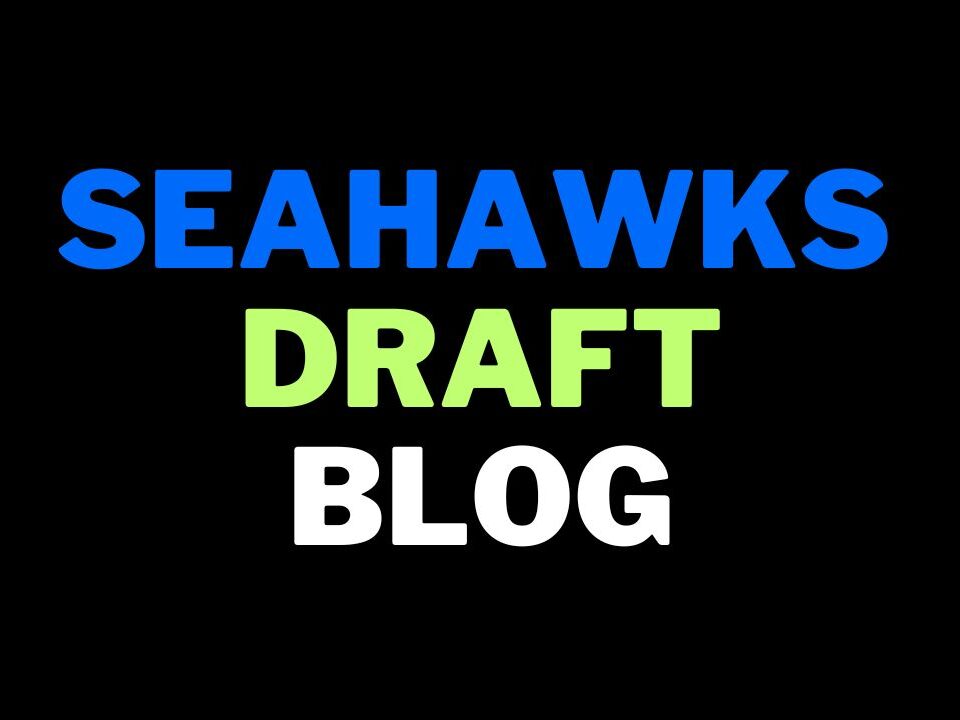
Pete Carroll said it's up to Wilson whether there will be a 3-way race for the starting job. In other words, there's going to be a 3-way race for the starting job this Summer.
There is so much to like about Russell Wilson. He’s accurate. He’s smart. He’s a fast learner. He’s very athletic and elusive. He plays his best on crucial downs and in the 4th quarter. His confidence, mental toughness, and leadership ability is within spitting distance of Tebow territory, but unlike Tim Tebow, Russell Wilson can actually throw the football, and throw it quite well. Metaphorical character and interview meters were shattered when he sat down with NFL coaches and general managers. Jon Gruden- infamous for being tough on young quarterbacks- stumped for Wilson with all the bias and passion of a proud father. Gruden had only met with Wilson for one day.
To say that I personally am a fan of the Wilson selection would be an understatement. I think that Drew Brees was more of a pioneer than an exception to the rule, and that Russell Wilson is latest of a very rare breed of quarterback to come down the pipeline. However, unchecked optimism has a way of biting people in the ass, so I think it’s of crucial importance to analyze Wilson with the same degree of critical attention that I would give anyone else. Then again, finding faults in Wilson’s game is no easy task. Wilson grades out between good to great in just about every category other than height. As such, digging into his flaws has taken more effort and closer attention to detail.
Last week, I looked into the claim that Wilson’s accuracy dips in the pocket. My conclusion from studying three games downplayed that concern while raising another: that being his tendency to overthrow when going intermediate and deep. Today I’ll cover a handful of other critical observations that I was able to come up with.
The Wisconsin effect.
At NC State, Russell Wilson had a career 135.5 passer rating, a 57.8% completion rate, 7.2 yards per attempt, and a 76/26 TD/INT ratio. He also averaged 120 rushing attempts per season. Those are Jake Locker type numbers almost across the board, if a bit better. I guess that’s fitting, as both quarterbacks flashed talent but lacked much of a supporting cast.
Wilson went to Wisconsin in 2011 and all he did was have the best statistical season in Division I history: a 191.8 passer rating, a 72.8% completion rate, 10.3 yards per attempt, and a 33/4 TD/INT ratio. How much of that performance was Wilson taking a step forward, and how much of that performance was Wilson capitalizing on an environment that was conducive to putting up huge numbers? Wisconsin has a recent history of statistically strong quarterbacks who did nothing in the NFL. Scott Tolzien being the most recent example. Tolzien posted a very similar stat line for Wisconsin in 2010: a 165.9 passer rating, a 72.9% completion rate, 9.2 yards per attempt, and a 16/6 TD/INT ratio.
To be sure, Wilson is probably not as good a quarterback as his Wisconsin numbers would suggest, but the draft status of Wilson’s predecessors is ultimately irrelevant. Quarterbacks are not drafted purely on their stats. They are drafted for the qualities they possess. I’ve scouted Tolzien. He was a good quarterback. He checks reads well, he makes smart decisions, he’s an accurate passer, and he can even hustle for a first down with his legs on occasion. He didn’t go undrafted because Wisconsin elevated his statistics. He went undrafted because he was an average athlete with a below average arm- a guy who stood 6’2″ and tipped the scales at just over 200 pounds. But more importantly than any of those things, Tolzien had sloppy throwing mechanics and terrible footwork. He was Robert Griffin without all the incredible natural gifts. Players like that tend to go undrafted no matter how good their natural abilities may be.
Other than size, Wilson is vastly superior to Tolzien in every way, which I think says a lot since Tolzien really was a pretty good college quarterback. Wisconsin is a great offense for a quarterback to play for, but what it isn’t is a gimmick based offense. Tolzien and Wilson earned every bit of their 72% completion rates. They took most of their snaps under center, they threw to all areas of the field, and they routinely progressed through multiple reads before finding and targeting an open receiver. It wasn’t a case like Oregon or Baylor where their scheme was designed to exploit college level athletes. It wasn’t an offense like TCU or Arizona that lives off of one-read plays or bubble screens. It wasn’t an offense that spread defenses out with constant four or five receiver sets like Oklahoma. Wisconsin’s is a legit offense that requires quality quarterback play to succeed.
Wisconsin has had some solid weapons the last couple years, but nothing great. Lance Kendricks was a 2nd round tight end (who left for the NFL before Wilson arrived). Nick Toon was a 4th round receiver. Jared Abbrederis will probably be a mid round receiver in a future draft. Both Toon and Abbrederis saw their production shoot through the roof when Wilson replaced Tolzien in 2011.
What Wisconsin does have is a pretty good offensive line and a phenomenal running game. That helps sell the play action and keeps the quarterback’s pass attempt totals low and increasingly opportunistic. Part of the reason Keith Price was so productive in 2011 for the Washington Huskies was because he completely bought into the philosophy of using the pass to set up the run. It’s essentially the same idea at Wisconsin, but with a stronger foundation in place. Did a good offensive line and strong running game boost Russell Wilson? Absolutely. But the exact same thing could be said for Andrew Luck and Matt Barkley. Put Wilson on USC or Stanford last year and you would probably see similar production.
The bottom line is that Wilson will not produce in the NFL like he did at Wisconsin, just like Andrew Luck won’t produce for the Colts quite like he did for the Cardinal. The real Russell Wilson is probably somewhere between his NC State and Wisconsin performances. Where he fits on that spectrum is anyone’s guess, but I tend to lean towards the Wisconsin side, if only because the Seahawks philosophy of building around the run and the offensive line is very similar to what the Badgers did, even if the literal playbook verbage more closely resembles NC State.
Pocket paranoia?
Overall I would grade Wilson’s pocket presence and elusiveness as well above average, though there are moments when he seems to react to pressure a bit earlier than he needs to. Wilson has no love for the pocket and almost seems to be forcing himself to stay between the tackles against his personal wishes at times. Wilson also has a habit of escaping out of the back door instead of stepping into the pocket. Wilson usually makes it work, but it’s the kind of habit that will backfire into drive killing 20 yard sacks in the NFL on occasion.
Forget about snap throws and three step drops.
Russell Wilson requires two things to overcome his height disadvantage: time and distance. He needs time because linemen begin every play clustered together but spread apart as the play develops. This is where throwing windows come from, and they don’t really exist in the first second or two of a play. Wilson needs distance because distance helps him see over the line and gives him more options for navigating through his throwing windows. A quick pass or short dropback affords Wilson neither of those things, so it shouldn’t be surprising that Wilson took about as many quick passes last season as Darron Thomas had snaps under center.
Thankfully, the Seahawks run an offense that utilizes developing routes, play action, and bootlegs- much like Wisconsin’s offense did. As such, I don’t see this as being much of a sacrifice, so long as Seattle’s pass protection can avoid embarrassing themselves. And if the second half of last season is any indication, things will probably hold up just fine.
Final thoughts:
We all know what Wilson does well at. It’s finding out what he doesn’t do well that has required all the work. Height is a flaw, but it is just one flaw among many that a quarterback could have. Then again, maybe a word like “flaw” is the wrong word to use. Perhaps “quirk” might work better. I say that because Wilson is not a flawed quarterback but a unique one.
People tend to fear things they don’t understand, and that goes double for NFL general managers. Fear and lack of understanding was the real reason that Drew Brees was not a first round pick, and it’s the same reason why Russell Wilson was not selected in the first two rounds. A handful of teams had the insight to see past Wilson’s faux height problem, and the Seahawks won the lottery for his services by committing on him the earliest. Wilson’s name was called at the 75th pick, and in a couple of war rooms somewhere two other general managers snapped the pencil they were holding in half when they heard it. There is a reason why Pete Carroll and John Schneider reacted the way they did when making that pick. They knew. After the draft they talked about how it would have hurt to walk out of this draft without Irvin and Wilson. From what we’ve learned since the draft, it sounds like a few other teams felt that way too.
Wilson will never post a 33/4 TD/INT ratio in the NFL or complete 72% of his passes. He might find it harder to run from trouble. He’ll have limitations on his game and will require a coach that is willing to work around them. Luckily for Wilson, he’s going to exactly the right kind of team, the kind of team that doesn’t need him to post MVP numbers to win championships. He’s going to the kind of team that can protect him and support him with the running game like Wisconsin did. He’s going to the kind of team that doesn’t live off of quick plays. But most importantly, he’s going to a team coached by Pete Carroll, who more than just about any coach lives by the philosophy of putting unique talents in position to succeed and building an offense with the idea of making life as easy as possible for the quarterback instead of asking for a messianic franchise quarterback to lean on.
Russell Wilson is in a really good situation, which means we are too as Seahawks fans. Mel Kiper is right. If Wilson can’t make this work, then maybe no quarterback under six feet can.




